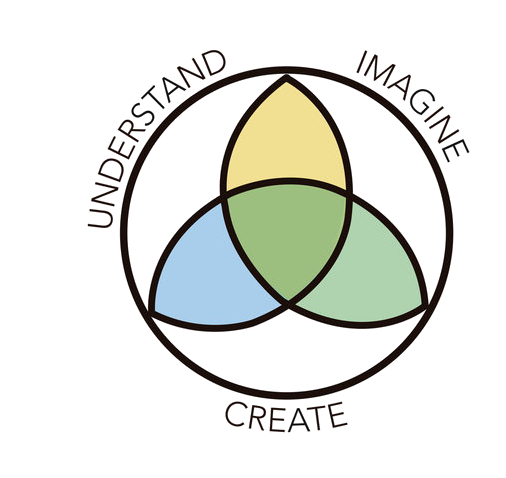About IC
The Early Story
How to bring a dream to birth
Early steps. How a design team can help move a process from an individual to a collectively owned vision.
How IC’s intergenerational interview process worked
In 1992, Bliss Browne listened to people talk about what might constitute an effective visioning and community connecting process in Chicago. An informal network began to gather around her questions. Nine months later, twenty of them -- educators, corporate executives, philanthropists, community organizers, youth developers, economists, religious leaders, and social service providers -- were convened as a design team. The John D. and Catherine T. MacArthur Foundation supported the early development.
From September 1992 to May 1993, the team designed a process of civic inquiry. Two ideas shaped the design. First, that it should focus on trusted experiences and possibilities, and second, that it should provide significant leadership opportunities for youth, who clearly represented the city's future. A design team member noted that the process was consistent with "Appreciative Inquiry" , an emerging methodology developed at Case Western Reserve University, to foster innovation in organizations through gathering positive stories and images and building on them to construct the desired future. Imagine Chicago's citywide interviews exemplified this mindset and approach.
In 1993-1994, a citywide intergenerational "appreciative inquiry" process gathered Chicago stories and commitments, and was followed by a series of community-based and led similar processes. Teams led by a young person, accompanied by an adult mentor, interviewed business, civic, and cultural leaders, about the future of their communities and of Chicago. Positive questions inquired about high points in the lives of citizens and their hopes for the future. The youth distilled the content for public view in ways that inspired public action and reinforced commitment. The process established a lively sense of shared civic identity, created effective methods for constructive inter-generational dialogue, and expanded the sense among the young people that they could make a difference. The video below tells the story of the powerful friendship which grew between inner city teen Tim Wilborn and then 98 year old philanthropist Gertrude Nielsen.
A case study of the program and its impacts can be found here. The process continues to inspire similar initiatives and was included in the PE2020 report of the EU written in 2015 (see pp. 85ff.) as one of the most promising public engagement practices.
Imagine Chicago learned that we needed sustaining structures so people’s inspiration could move to action and leverage the connections. Beginning in 1995, Imagine Chicago designed structured inter-generational initiatives with public partners (schools, community development organizations, cultural institutions and faith communities) who shared a commitment to the city's future. Each initiative moved toward visible outcomes using an Understand-Imagine-Create framework. Through structured dialogues, curriculum development and opportunities for joint action, more and more citizens asked questions and learned how their visions, choices, and commitments could help shape broader systems and communities in the city.
The initial city dialogues led to a variety of partnership programs that built institutional capacity, created meaningful connections across generations, cultures, and neighborhoods and developed active citizens. Primary focus areas were education, leadership formation, and community development. For detailed program descriptions visit the Programs section of this website.
